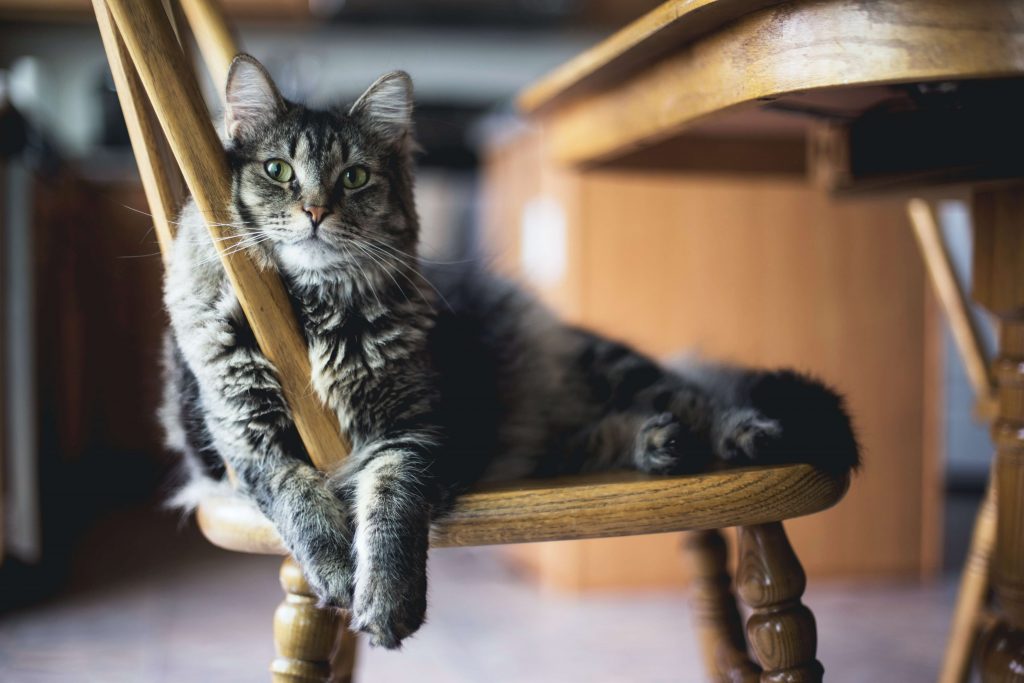Every cat owner will tell you that (most) cats are nothing but a total joy to have around the home. They can be warm, affectionate, playful, funny and intelligent. And they also tend to be much more independent than dogs, so they’re not as demanding of your time and you don’t need to worry about leaving them on their own when you all have to go out for a while.
However, having said all that, there is one thing about cats that nobody loves – fleas!
Unfortunately, it’s very easy for cats to pick up fleas when they’re out and about on their travels around the neighbourhood. And although there are things you can do to lessen the chances of it happening, there are no guarantees that you’ll keep them at bay.

Has my cat got fleas?
The last thing you want is for your whole house to become infested, so it’s essential that you keep an eye on your cat’s behaviour so that you can identify and deal with a flea problem at the earliest possible opportunity.
But what should you be looking out for? Here are five key signs:
1. Scratching and biting
Flea bites cause your cat’s skin to itch – as our skin does when they bite us as well. So one of the main things you’ll notice when your cat has fleas is that they spend a lot more time scratching themselves. They may also nibble or bite at themselves in a desperate attempt to get at the source of their discomfort.
2. Bare patches or fur loss
The more your cat scratches and bites at the irritations caused by the fleas, the more likely they are to lose fur in those areas, although it could also just be a reaction to the flea bites themselves. You may also notice red patches or signs of general irritation on your cat’s skin, all of which are likely signs of fleas.
3. The fleas themselves
Fleas aren’t easy to see in general, although you might be more likely to spot them if your cat has white fur. That’s because fleas are dark brown in colour and only between 1-2 mm long. Your best chance of seeing them is on the neck and back of your cat, as it’s not an easy area for your cat to reach and groom itself.
Alternatively, keep an eye out for small black flecks when you comb your cat’s fur as that could be flea waste. Test any you come across by putting them onto damp tissue paper or cotton wool – if the paper or cotton wool turns red, your cat will almost certainly have fleas. That’s because the flea waste will contain blood that has been digested by the flea.
4. Flea bites on your own legs
Once established in the home, fleas also get into our carpets and other soft furnishings, and are just as likely to feast on you as on your cat. So if you start getting bites or excessively itchy, especially on your legs, that might also be a sign that your cat has brought fleas into your home.
5. Lethargy
If your cat is suffering really badly, then the blood loss caused by the flea bites might cause it to become anaemic and, as a result, noticeably lethargic. This is likely to be something you notice on top of the previous signs we’ve listed, so on its own may not necessarily be a sign of fleas. Either way, if your cat shows such signs, you’d be best advised to get it to the vet as soon as possible.
Naturally, we’re particularly careful with the guests coming to stay at our cattery, because it is so easy for cats to pass fleas onto each other. That’s why we’re such a popular choice for so many cat owners around Kingston and Chessington in Surrey when it comes to people finding somewhere to place their cats when they go away.
To find out more, get in touch with the friendly team at Green Lane Farm Boarding Kennels today.




